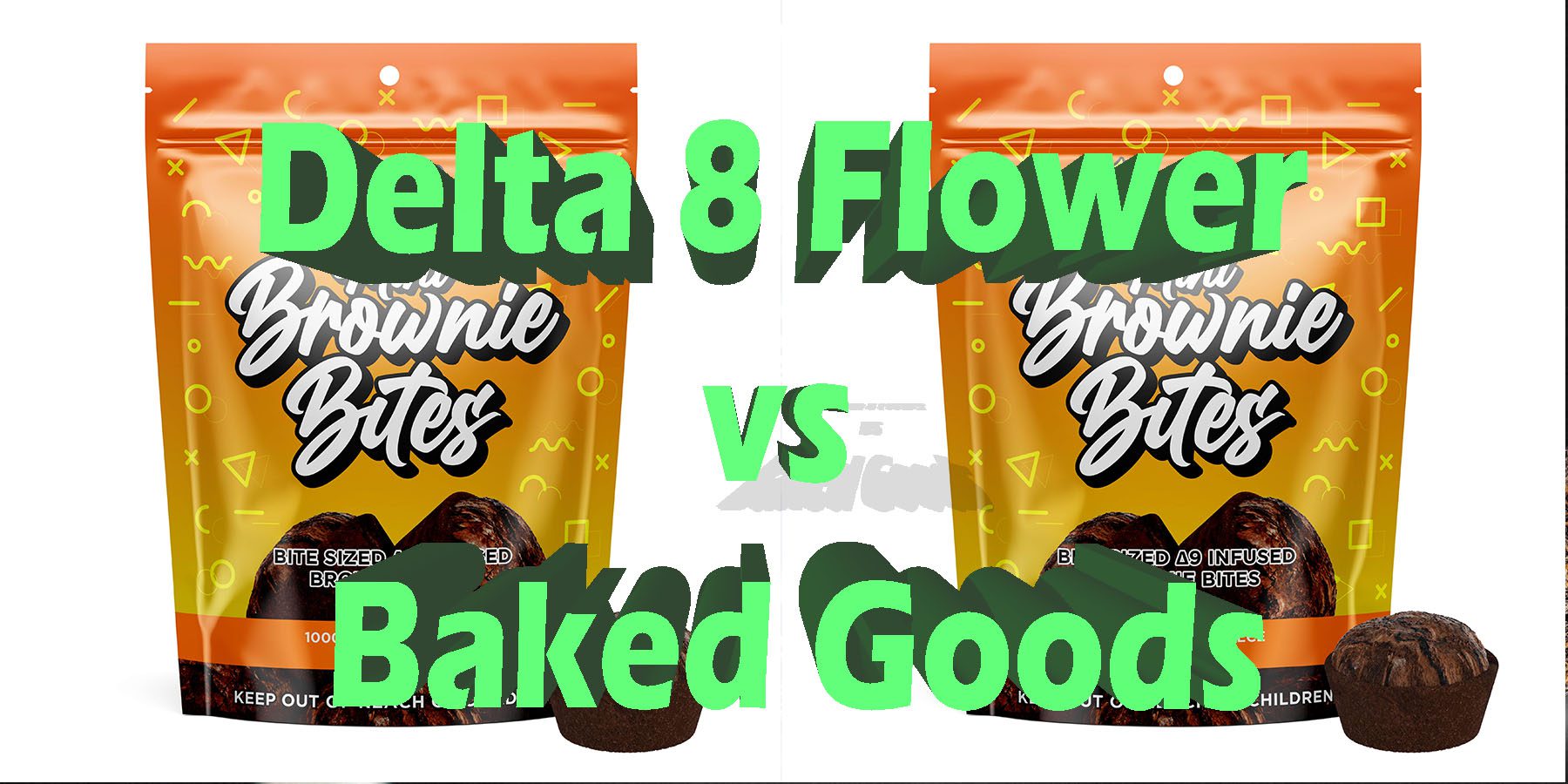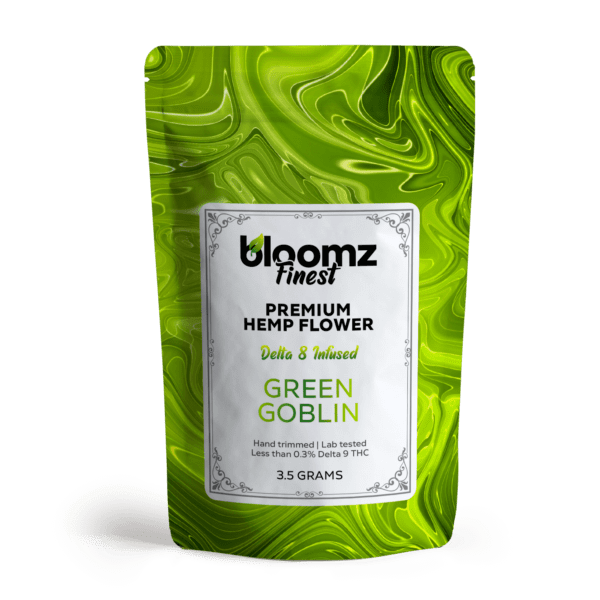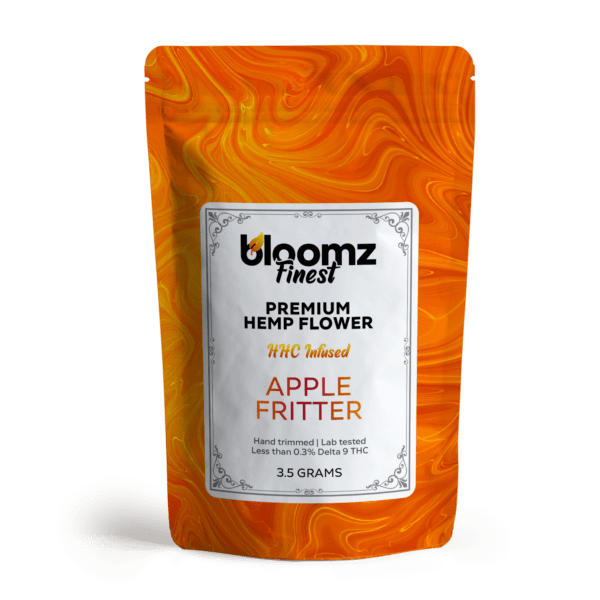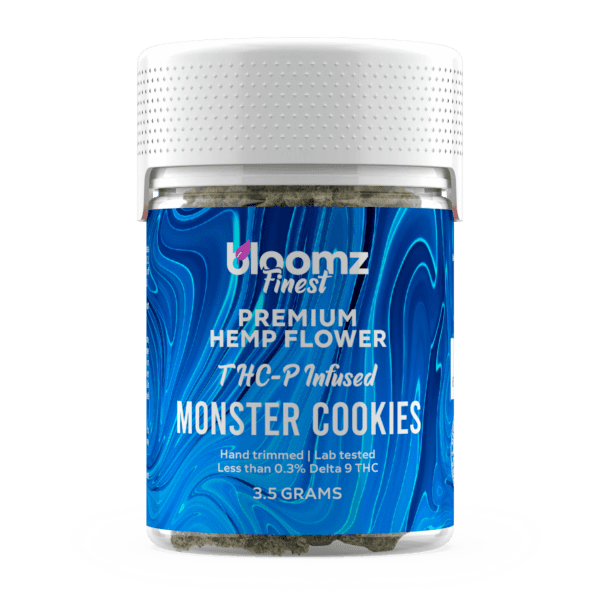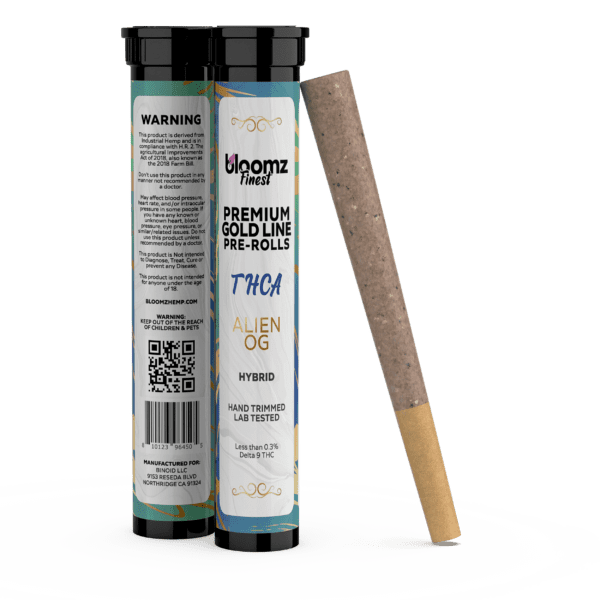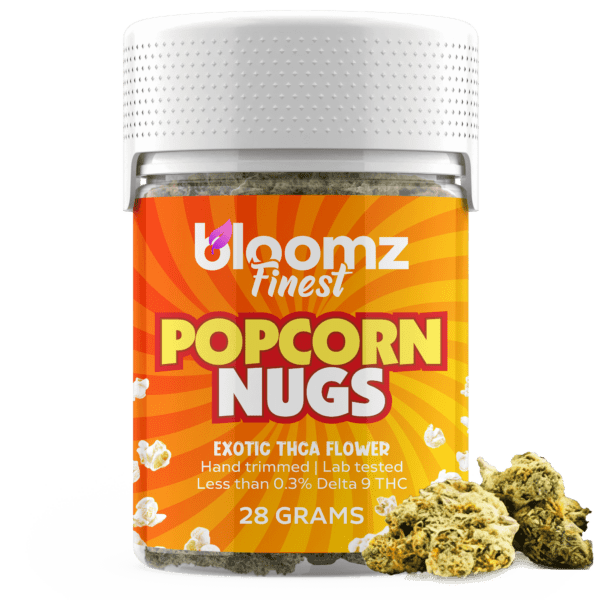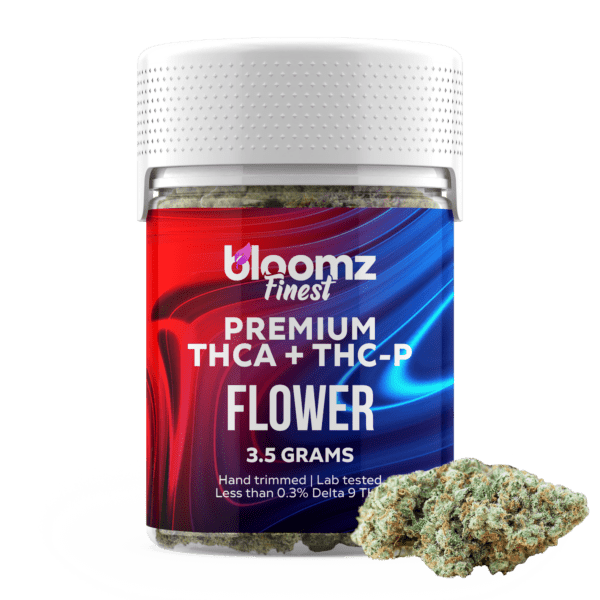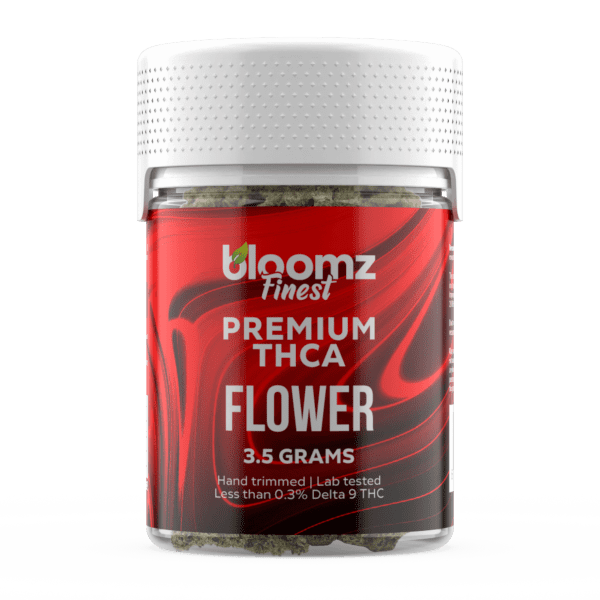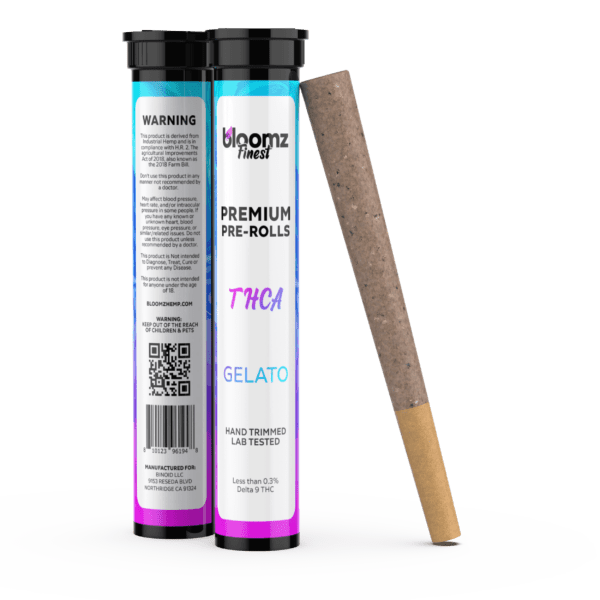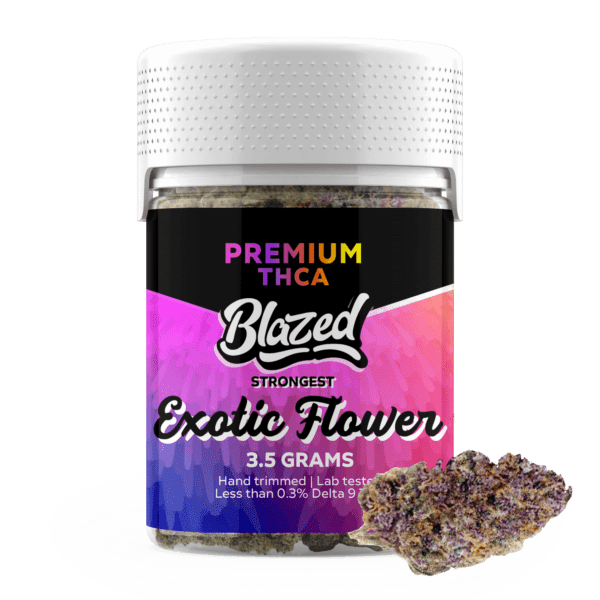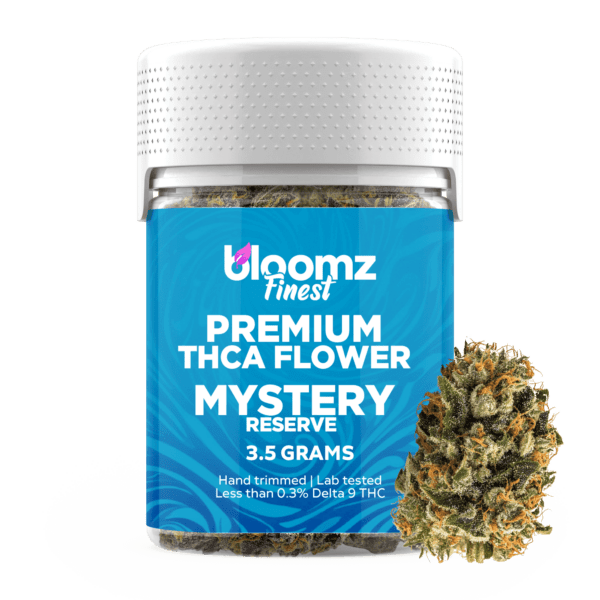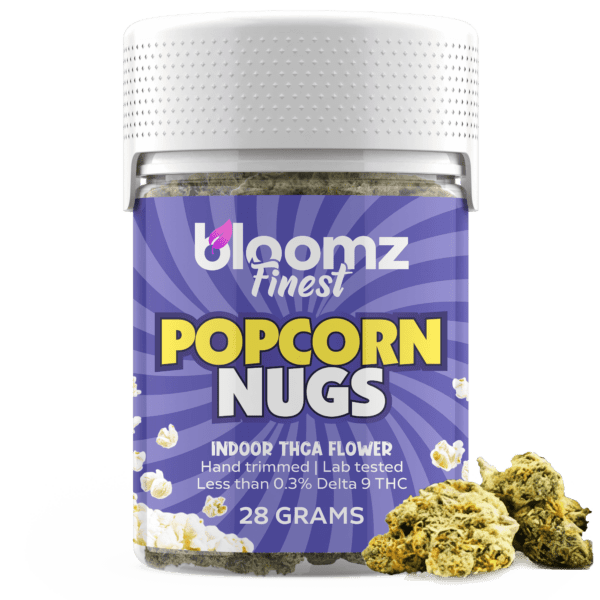In the grand and fascinating laboratory of modern wellness, a form of alchemy is taking place. Base materials, derived from the humble hemp plant, are being transformed through science and culinary artistry into novel experiences that cater to a vast spectrum of preferences. This contemporary alchemy presents a captivating choice between two distinct philosophies of creation. On one side, we have the gilded lily: an existing, natural form—the botanical flower—that has been enhanced and imbued with new properties. On the other, we have the golden pastry: a creation built from the ground up, where disparate ingredients are blended, heated, and transformed into a comforting and entirely new entity.
This is the fundamental choice between the aromatic, enhanced ritual of Delta 8 THC Flower and the nostalgic, delicious satisfaction of a wellness-intended pre-made baked good. Deciding between them is more than a simple preference; it is an exploration of which form of modern craftsmanship best aligns with your personal quest for bliss and relaxation.
TO BUY DELTA 8 THC FLOWER CLICK HERE
Recommended products
Why It’s Important to Breakdown the Matchup of Delta 8 THC Flower vs. Wellness-Intended Pre-Made Baked Goods
In a market that is constantly being redefined by scientific innovation and consumer demand, a detailed breakdown of two powerhouse products like Delta 8 THC Flower and pre-made baked goods is an essential exercise in clarity. These two options, while both offering a smoke-free path to wellness and enjoyment, represent vastly different approaches to product creation and user experience. The former is a testament to the power of chemical enhancement on a natural product, while the latter showcases the art of culinary formulation.
By meticulously examining their divergent origins, methods of consumption, and the nuanced legal landscapes they inhabit, we can strip away the marketing jargon and empower consumers with the knowledge to make a truly informed decision. This comparison serves as a vital compass, guiding individuals toward the product that not only delivers their desired effects but also harmonizes perfectly with their lifestyle, palate, and personal philosophy:
-
A Divergence in Creation: The Enhanced vs. The Formulated: At the very foundation of this matchup is a critical distinction in how these products come to be. Delta 8 THC flower does not grow on a plant; it is expertly crafted. The process begins with legally grown CBD or CBG hemp flower, which is then systematically coated or infused with a pure Delta 8 THC distillate created in a laboratory. It is an act of enhancement. Pre-made baked goods, in contrast, are an act of complete formulation. They are a culinary creation, built from a recipe that combines foundational ingredients like flour, sugar, and fat with a precisely measured dose of an active ingredient. This presents a fundamental choice for the consumer: do you prefer a product that retains its natural, whole-plant structure, albeit with an external addition, or a product that has been entirely constructed to deliver a consistent and delicious experience?
-
The Critical Factor of Experience: Inhalation vs. Ingestion: The entire character and timeline of the user experience are dictated by the method of consumption. Delta 8 THC flower is meant for inhalation. When smoked or vaporized, the active compounds are aerosolized and rapidly absorbed through the lungs into the bloodstream, resulting in an onset of effects that can be felt within minutes. This immediacy allows for intuitive, real-time dose adjustments. Baked goods, as a classic edible, must navigate the entire gastrointestinal tract. This long journey, which involves digestion in the stomach and first-pass metabolism in the liver, significantly delays the onset of effects, often taking an hour or more. However, this metabolic process typically creates a more potent metabolite, leading to an experience that is profoundly longer-lasting and often felt more intensely throughout the body.
-
The Dosing Dynamic: Intuitive Titration vs. Imprecise Division: The two formats offer vastly different approaches to dosing. With flower, the user engages in a process of intuitive titration. They can take a single puff, wait a few moments to assess the effects, and then decide if they want more. While this offers excellent in-the-moment control over the intensity of the experience, it is very difficult to quantify in precise milligrams. Baked goods present the opposite scenario. A brownie may be advertised as containing a total of 100mg, but the common practice of dividing it—”eating half a brownie”—is an inherently imprecise act. It is very difficult to ensure one half is exactly the same as the other, which can lead to inconsistent experiences from the same product, a crucial factor for those seeking reliable effects.
-
Navigating the Legal Labyrinth: Both products exist thanks to the 2018 Farm Bill, but they navigate the legal landscape in different ways. Delta 8 THC itself is in a contentious legal gray area. Because it is typically synthesized from CBD, many states have moved to ban it, creating a complex patchwork of legality that changes frequently. For baked goods, the legal math is also a key factor. The 0.3% Delta 9 THC limit is based on the total dry weight of the product. Because a brownie is much heavier than a gram of flower, it can legally contain a much higher total milligram dose of hemp-derived Delta 9 THC, making potent edibles federally compliant. This is a crucial distinction that has allowed the infused baked goods market to flourish.
Contender #1: Delta 8 THC Flower
Delta 8 THC flower has carved out a significant niche in the contemporary hemp market, standing as a powerful symbol of the industry’s capacity for innovation. It presents a fascinating paradox: a product that looks, smells, and is consumed like traditional cannabis flower, yet delivers an experience that is uniquely its own. This is not a product that is simply harvested from the earth; it is a meticulously crafted item that marries high-quality, natural hemp with the precision of laboratory science. Delta 8 flower offers a bridge for many consumers—a familiar and cherished format that provides a pathway to the novel, sought-after effects of Delta 8 THC.
For many enthusiasts, its core appeal is this perfect blend of the old and the new: the timeless, hands-on ritual of consuming flower, paired with a modern, clear-headed, and functional sense of euphoria that distinguishes it from its more famous cannabinoid relatives. To engage with Delta 8 THC flower is to experience a compelling chapter in the ongoing story of hemp’s versatility.
To fully grasp what Delta 8 flower is, one must first understand the remarkable cannabinoid that defines it. Delta 8 Tetrahydrocannabinol (Delta 8 THC) is a fascinating analogue and isomer of the more well-known Delta 9 THC. The term “isomer” means that both molecules share the exact same chemical formula, but their atoms are arranged differently. The only distinction lies in the location of a specific double bond in their carbon chain; in Delta 8, this bond is on the eighth carbon atom, while in Delta 9, it is on the ninth.
This subtle structural shift has a significant impact on how the molecule interacts with the body’s endocannabinoid system (ECS), particularly the CB1 receptors. It binds less potently than Delta 9 THC, which is why users almost universally report that Delta 8 produces a milder, more manageable, and clearer-headed euphoric experience. While Delta 8 THC does occur naturally in the cannabis plant, it is only found in minuscule, non-economically viable trace amounts. Therefore, the vast majority of Delta 8 on the market is produced in a laboratory by converting hemp-derived CBD into Delta 8 THC through a chemical process called isomerization.
This brings us to a critical and often misunderstood point: there is no such thing as a naturally grown, high-Delta 8 THC cannabis flower, as any product marketed as “Delta 8 flower” is, in fact, a manufactured product. The process begins with a base of high-quality, legally compliant hemp flower, which is typically rich in CBD or another non-intoxicating cannabinoid like CBG. This hemp flower is then infused or coated with a pure Delta 8 THC distillate that was created in a lab.
Recommended products
The quality of the final product is therefore dependent on two key factors: the quality of the starting hemp flower and the purity and application method of the Delta 8 distillate. The production process of Delta 8 THC flower is a multi-stage endeavor that combines agriculture with chemistry to create the finished product that consumers enjoy:
-
Cultivation of Premium Hemp Flower: The foundation of any good Delta 8 flower is high-grade hemp flower. Reputable manufacturers source visually appealing, aromatic, and terpene-rich CBD or CBG flower that has been expertly grown, dried, and cured. The natural terpenes and minor cannabinoids in this base flower will contribute significantly to the final product’s aroma, flavor, and overall “entourage effect.”
-
Creation of Delta 8 THC Distillate: In a separate, highly controlled laboratory setting, the active ingredient is created. The process starts with pure CBD isolate, a crystalline powder that is over 99% pure CBD. This isolate is dissolved in a solvent and then combined with an acid catalyst. The mixture is heated and agitated for a specific period, which causes the CBD molecules to rearrange themselves, or “isomerize,” into Delta 8 THC molecules. The resulting liquid then undergoes extensive refinement and distillation to remove any residual solvents, acids, and unwanted byproducts, yielding a thick, potent, and highly pure Delta 8 THC distillate.
-
The Infusion and Coating Process: This is the step where the flower and the distillate are combined. There are several methods for achieving this. A common technique involves lightly heating the thick distillate to make it more fluid, and then spraying it as evenly as possible over the hemp buds while they are being gently tumbled. Another method involves using a solvent to liquefy the distillate into a finer mist for a more even coating. A more advanced, solventless technique is “cryo-infusion,” where the Delta 8 distillate is frozen and crushed into a fine powder, which is then electrostatically charged to help it adhere to the buds before being gently heated to infuse.
-
Post-Infusion Curing and Drying: After the sticky distillate has been applied, the flower is no longer in its ideal state. It is often wet or overly tacky to the touch. The product must then undergo a final curing or drying process to remove any excess moisture or solvents and to ensure the final product is pleasant to handle, grinds properly, and smokes evenly.
-
Comprehensive Third-Party Lab Testing: Before the final product can be sold, it is crucial that it is tested by an accredited third-party laboratory. The Certificate of Analysis (COA) for a Delta 8 flower is especially important. It not only verifies the potency of the Delta 8 THC but also must be scrutinized to ensure the product is free from any residual solvents or chemical reagents that may have been used in the isomerization or infusion processes, guaranteeing a safe and clean final product for the consumer.
The market for Delta 8 THC flower offers a variety of options that are primarily differentiated by the quality of the base hemp flower used and the method of its creation. Unlike naturally grown flower where categories like “exotic” refer to genetics, here they refer to the combination of premium hemp flower and the quality of the infusion process. Understanding these distinctions can help consumers select a product that meets their standards for quality, potency, and overall experience:
-
Indoor Delta 8 Flower: This is considered the top-shelf option. The process starts with premium, indoor-grown CBD or CBG hemp flower, which is prized for its dense bud structure, vibrant appearance, and rich terpene profile. This high-quality base is then carefully infused with pure Delta 8 distillate. The final product offers the best of both worlds: the pleasant aroma and flavor from the natural terpenes of the high-grade flower, combined with the clear, uplifting effects of the Delta 8 THC.
-
Outdoor Delta 8 Flower: This is a more budget-friendly category. The base material is sun-grown, outdoor CBD hemp flower. While often less cosmetically perfect and potentially less aromatic than its indoor counterpart, outdoor flower can still be of high quality and provides a more affordable foundation. Once infused, it delivers the same core Delta 8 THC effects but may have a more muted flavor and aroma profile compared to the premium indoor versions.
-
Delta 8 Smalls: Similar to other types of flower, “smalls” refer to the popcorn-sized buds from a harvest. Delta 8 smalls are simply smaller buds of CBD or CBG hemp flower that have been infused with Delta 8 distillate. They offer the exact same potency and experience as the larger nugs from the same batch but are sold at a lower price point, making them an excellent value for consumers who are not concerned with the cosmetic size of their buds.
-
Delta 8 Nugs: This term simply refers to the standard, full-sized buds of Delta 8 flower. These are the primary, A-grade buds of the base CBD flower that have been infused, representing the standard product that most consumers will encounter.
-
Delta 8 Moonrocks: This is a particularly popular and potent application for Delta 8 THC. The creation of a Delta 8 moonrock is a three-step process. It begins with a solid nug of CBD or CBG flower, which is then fully coated in a sticky layer of high-purity Delta 8 THC distillate. While the distillate is still wet, the entire bud is then rolled in a thick blanket of CBD or CBG kief (pure, sifted trichomes). The resulting product is incredibly potent, slow-burning, and offers a powerful, multi-layered experience.
-
Delta 8 Pre-Rolls, Blunts & Joints: For ultimate convenience, many manufacturers offer pre-packaged, ready-to-smoke options. These consist of ground-up Delta 8 flower that has been professionally rolled into papers (joints) or hemp wraps (blunts). They eliminate the need for any grinding or rolling on the part of the consumer, providing a simple, portable, and accessible way to enjoy the effects of Delta 8 flower without any of the associated preparation.
One of the most important aspects to understand when shopping for Delta 8 THC flower is the significance of the “strain” name. When you see a product labeled as “Sour Diesel Delta 8 Flower” or “OG Kush Delta 8 Flower,” that name refers to the genetic strain of the base CBD hemp flower that was used to create the product, not to a naturally grown Delta 8 strain. This is a crucial distinction.
The overall experience of the product will be a synergistic combination of two factors: the effects of the natural terpenes and minor cannabinoids present in the base hemp flower, and the overarching euphoric and relaxing effects of the Delta 8 THC distillate that has been applied to it. This allows for a curated experience based on the foundational characteristics of these three primary strain types:
-
Indica: When an Indica-dominant CBD hemp strain like Bubba Kush or Granddaddy Purple is used as the base for Delta 8 flower, the resulting product tends to lean heavily toward relaxation. The natural terpenes found in these strains, such as myrcene and linalool, are known for their calming and soothing properties. When combined with the comforting body buzz of Delta 8 THC, the result is a product that is perfectly suited for evening use, helping users unwind, decompress, and sink into a state of profound, blissful tranquility.
-
Sativa: Conversely, if a Sativa-dominant CBD hemp strain like Sour Space Candy or Lifter is used as the base, the experience is typically much more uplifting and cerebral. The terpenes commonly found in these strains, such as limonene and pinene, are associated with energetic and focus-enhancing effects. The addition of Delta 8 THC’s clear-headed euphoria complements these properties perfectly, creating a product that is ideal for daytime use, creative projects, social gatherings, or any activity where a boost of cheerful, motivating energy is desired.
-
Hybrid: Hybrid CBD hemp strains, which represent the majority of the market, offer a balanced profile of effects that fall somewhere between the two extremes. A well-balanced hybrid strain used as the base for Delta 8 flower can provide a “best of both worlds” experience. It might offer a gentle cerebral uplift and a wave of creative energy, followed by a soft, relaxing body sensation that doesn’t lead to sedation. This versatility makes hybrid Delta 8 flower a fantastic all-purpose option, suitable for almost any time of day or occasion.
The legal status of Delta 8 THC flower in the United States is one of the most complex and hotly debated topics in the entire hemp industry. Its legality is derived from the 2018 Farm Bill, which legalized hemp and defined it as cannabis containing less than 0.3% Delta 9 THC. Because Delta 8 THC is not Delta 9 THC, and because it is derived from legally grown hemp (specifically, from CBD), proponents argue that it is a federally legal hemp product. This interpretation has allowed for its sale in many states across the country, particularly those that do not have legal adult-use cannabis programs.
However, this status is under significant challenge. Because Delta 8 is created through a chemical conversion process in a lab, some federal agencies and numerous states have argued that it qualifies as a “synthetically derived” cannabinoid or have passed laws to explicitly ban or severely restrict its sale. This has resulted in a constantly shifting and confusing legal patchwork where Delta 8 flower may be fully legal in one state, but completely illegal in a neighboring one. It is absolutely imperative for consumers to research the specific laws and regulations regarding Delta 8 THC in their own state and municipality before attempting to purchase or possess it.
Recommended products
The methods for consuming Delta 8 THC flower are identical to those for any other type of cannabis flower, as the goal is to heat the product to activate and aerosolize the cannabinoids for inhalation. The chosen method can influence the flavor, convenience, and overall experience of the session. It is worth noting that because Delta 8 flower is coated in a sticky distillate, it can sometimes be more difficult to grind than non-infused flower, occasionally gumming up the teeth of a grinder:
-
Vaping (using a portable or desktop vaporizer): Vaporizing is often considered the optimal method for consuming infused flower like Delta 8. A vaporizer heats the flower to a temperature that is hot enough to turn the Delta 8 distillate and the natural terpenes into an inhalable vapor, but not hot enough to cause combustion. This provides a smoother, cleaner, and more flavorful experience that allows the user to taste the underlying terpenes of the base flower. It is also more efficient, as less of the active compound is destroyed by high heat.
-
Smoking: This is the most traditional and straightforward method. It involves combusting the Delta 8 flower in a pipe, bong, or by rolling it into a joint or blunt, and then inhaling the smoke. While the high heat of combustion can mute some of the more delicate flavors, many users prefer the ritualistic nature and the robust, immediate effects that smoking provides. Water pipes, or bongs, can help to cool and filter the smoke for a smoother experience.
-
Cooking/Baking: While less common, Delta 8 flower can also be used to create homemade edibles. The flower would first need to be decarboxylated in an oven to ensure all cannabinoids are fully activated. After this heating process, the flower can be infused into a fat like butter or oil. This infused fat can then be used in any recipe. However, given the widespread availability and precise dosing of commercially made Delta 8 edibles, most users opt for the convenience of smoking or vaping the flower directly.
The overall effects of Delta 8 THC flower are the primary driver of its meteoric rise in popularity. The experience is almost universally described by users as a more gentle and manageable form of the euphoria produced by its more famous chemical cousin, Delta 9 THC. The effects are characterized by a noticeable and pleasant uplifting buzz, a clear sense of bliss, and a comforting, warm body sensation that promotes deep feelings of relaxation. The key differentiator, however, is the clear-headed nature of the cognitive effects.
A great number of users report that they can remain sharp, focused, and socially engaged, without the intense mental haze, paranoia, or unease that can sometimes be associated with high concentrations of Delta 9 THC. This makes Delta 8 flower an exceptionally functional option for a wide array of activities, from unwinding at home after work to engaging in creative hobbies or enjoying a lively conversation with friends. It masterfully occupies a desirable middle ground: undeniably effective and euphoric, yet gentle enough to allow the user to remain comfortably in control of their experience.
Pros & Cons
Like any innovative product, Delta 8 THC flower comes with its own unique set of advantages and potential drawbacks. These are crucial to consider when deciding if this manufactured form of flower is the right choice for your needs. Its pros often revolve around its unique effects and legal accessibility, while its cons tend to relate to its artificial nature and the inconsistencies of the manufacturing process.
Pros:
-
A Milder, More Clear-Headed Experience: The most celebrated benefit of Delta 8 THC is its unique psychoactive profile. It provides a genuine sense of euphoria and relaxation but is significantly less potent than Delta 9 THC. This results in a more manageable, clear-headed experience that many users find is less likely to induce feelings of unease or fogginess, making it a more functional and approachable option for a wider range of activities.
-
Legal Accessibility in Certain Regions: Due to its legal standing under the 2018 Farm Bill, Delta 8 THC is legally available for purchase in many states where Delta 9 THC remains prohibited. This has provided a legal pathway for millions of people to access a euphoric, hemp-derived product that they would otherwise not be able to obtain.
-
Combines Familiar Ritual with Novel Effects: Delta 8 flower offers the best of both worlds for many consumers. It allows them to continue enjoying the timeless, hands-on ritual of grinding, packing, and smoking or vaping flower, which is a cherished process for many. At the same time, it delivers the novel, uplifting, and functional effects of Delta 8 THC.
-
Fast-Acting Effects via Inhalation: Like all forms of flower, the effects of Delta 8 flower are felt almost instantaneously when smoked or vaped. This rapid onset provides immediate feedback, which is perfect for users who want to feel the effects right away. It also allows for easy dose titration, as one can simply take one puff and wait to assess the effects before proceeding.
-
Wide Variety of Strain Experiences: Because Delta 8 flower is made by infusing high-quality CBD hemp flower, consumers can choose from a vast library of underlying strains. By selecting a product based on an Indica, Sativa, or Hybrid hemp strain, users can tailor the experience to be more relaxing, more uplifting, or more balanced, thanks to the unique terpene profiles of the base flower.
-
A Potent and Enjoyable Body Sensation: Many users report that Delta 8 THC produces a particularly noticeable and pleasant body sensation. This “body buzz” can feel deeply relaxing and comforting, as if a wave of warmth and ease is washing over the body. This makes it an excellent choice for unwinding and decompressing after a long or physically demanding day.
-
Generally More Affordable: In many markets, Delta 8 THC products, including flower, are more affordable than their Delta 9 THC counterparts from state-licensed dispensaries. This lower price point, combined with its legal accessibility, makes it an attractive option for budget-conscious consumers.
-
Less Intense Aroma Than Traditional Cannabis: While Delta 8 THC flower does have an aroma from the base hemp flower, the process of infusing it with distillate can sometimes mute the overall pungency. For some users, this can be an advantage, as it may be slightly more discreet in terms of odor compared to extremely “loud” top-shelf traditional cannabis.
-
Supports the Hemp Farming Industry: The creation of Delta 8 flower relies on a steady supply of high-quality CBD and CBG hemp flower. The popularity of this product category directly supports hemp farmers across the country, providing them with a crucial market for their agricultural products.
-
A “Social” Buzz: The clear-headed and functional nature of the Delta 8 experience is often described as being more “social.” Users may feel more talkative, engaged, and less introspective compared to how they might feel with more potent cannabinoids, making it a popular choice for sharing with friends or enjoying at social gatherings.
Cons:
-
It is a Manufactured, Not Natural, Product: The most significant drawback for purists is that Delta 8 flower is not a product of nature. The active ingredient is created in a lab and then applied to a different plant. This artificial nature and the multi-step manufacturing process can be a major turn-off for consumers who prefer to consume products in their most natural, unprocessed state.
-
Potential for Inconsistent Quality: The quality of Delta 8 flower can vary dramatically from one brand to another. The final product can be negatively impacted by a low-quality base flower, an impure distillate, or an uneven and sloppy infusion process. This can result in a harsh-smoking, bad-tasting product with inconsistent effects.
-
Risk of Residual Solvents or Contaminants: The chemical process used to create Delta 8 THC from CBD involves the use of solvents and acid catalysts. If the final distillate is not properly refined and tested, there is a risk that these harmful residues could end up in the final product. It is absolutely crucial to only purchase from reputable brands that provide comprehensive third-party lab tests.
-
Complicated and Uncertain Legal Status: While federally legal under one interpretation of the Farm Bill, the legal status of Delta 8 THC is highly volatile and contested. Numerous states have banned it, and it exists in a constant state of legal uncertainty. Consumers run the risk of purchasing a product that may become illegal in their state overnight or unknowingly violating local laws.
Contender #2: Pre-Made Baked Goods
Entering the arena as a bastion of comfort, familiarity, and timeless culinary delight, wellness-intended pre-made baked goods represent one of the most traditional, beloved, and emotionally resonant forms of edibles. These carefully crafted creations—from decadent, fudgy brownies and soft, chewy cookies to rich blondies and nostalgic cereal treats—tap into a deep well of sensory pleasure and positive association, transforming the act of engaging with wellness ingredients into a genuinely enjoyable and satisfying indulgence.
They stand in stark contrast to the raw, botanical nature of flower, offering instead a finished, skillfully crafted product that requires no preparation, knowledge, or effort on the part of the consumer. The appeal of a baked good is universal and immediate; it is less about a complex, hands-on ritual and more about the simple, satisfying, and comforting pleasure of a delicious bite. In the modern wellness market, these timeless recipes have been reimagined and infused with a wide array of functional ingredients, firmly establishing baked goods as a potent, exceptionally long-lasting, and incredibly approachable option for consumers of all backgrounds and experience levels.
At their essence, wellness-intended pre-made baked goods are ready-to-eat culinary products, crafted using traditional baking techniques, that have been infused with specific active ingredients for a targeted purpose. This category is wonderfully broad, encompassing a familiar and comforting variety of treats. It includes dense, chocolate-laden brownies; their vanilla and brown-sugar-based cousins, blondies; cookies of all imaginable types from chocolate chip to oatmeal raisin; crispy and chewy cereal treats; single-serving cakes and cupcakes; and even an emerging market of savory options like infused crackers or pretzels.
What distinguishes them from their conventional bakery counterparts is the precise addition of functional ingredients. The “pre-made” aspect is absolutely central to their value proposition. They are produced in commercial kitchens and bakeries that adhere to stringent food safety and quality control standards, are tested for consistency and potency, and are then individually packaged to preserve freshness and ensure a reliable experience. This commercial preparation eliminates any need for the consumer to possess baking skills, source specialized ingredients, or dedicate the significant time required for accurate and effective home infusion, offering instead the ultimate in comforting convenience.
The creation of a high-quality, consistently dosed, and delicious pre-made baked good is a masterful blend of culinary artistry and exacting scientific precision. This process takes place in commercial-grade bakeries where the art of the pastry chef meets the rigor of a laboratory technician. Every stage is carefully controlled to ensure that each individual item in a batch is not only safe and delicious but also contains the exact advertised dose of the active ingredient, a level of reliability that is crucial for consumer trust and a positive, predictable experience:
-
Sourcing Quality Culinary Ingredients: The foundation of any exceptional baked good is the quality of its base ingredients. The process begins with sourcing premium components: specific types of flour (like cake flour for a tender crumb or all-purpose for a chewier texture), high-quality sweeteners, and crucially, premium fats like European-style butter with a higher fat content for richer flavor, or refined coconut oil for vegan recipes. The quality of the flavorings, such as high-fat cocoa powder, pure vanilla extract, and fine-ground salt, also has a profound impact on the final product’s ability to be both effective and delicious.
-
Creating the Infused Base: This is the most critical step for dosage accuracy and efficacy. Rather than simply mixing a powdered ingredient into the batter, which would lead to inconsistent distribution, professionals first create an infused base. Typically, this is a fat like butter or oil. The active ingredient, such as a pure hemp-derived cannabinoid distillate, is carefully measured and then thoroughly homogenized into the melted fat. Because cannabinoids are nonpolar, they readily dissolve into lipids (fats), creating a stable and evenly saturated infusion that can be perfectly blended into the main recipe.
-
Precise Mixing and Batter Preparation: The now-infused butter or oil is then incorporated into the full recipe using precise measurements and specific culinary techniques. For example, in cookies, the “creaming method” might be used, where the infused fat and sugar are beaten together to incorporate air, which is essential for a light and tender final texture. The ingredients are mixed in large, industrial-grade mixers to create a perfectly uniform dough or batter, ensuring that the infused fat is evenly integrated and that any given portion of the batter contains a consistent amount of the active compound.
-
Portioning, Baking, and Dosing Control: The prepared batter or dough is then meticulously portioned. Automated depositors may place exactly sized pucks of cookie dough onto baking sheets, or an exact weight of brownie batter is spread into pans. The products are then baked under tightly controlled temperatures and times. The heat of the oven triggers crucial chemical reactions like caramelization of sugars and the Maillard reaction between amino acids and reducing sugars, which together create the deep, complex, and browned flavors that are characteristic of baked goods and are highly effective at masking any residual botanical flavors. The final dose of each item is determined by this precise portioning.
-
Cooling and Quality Assurance Testing: After baking, the goods must be properly and thoroughly cooled on racks before they can be packaged. This is a critical step that prevents condensation from forming in the package and allows the internal structure, or “crumb,” of the baked good to set properly. During this phase, representative samples are pulled from the batch and sent to a third-party laboratory. This lab conducts a full panel of tests, verifying not only the potency of the active ingredient but also screening for any potential microbial contaminants like yeast and mold, as well as food allergens, to ensure the product is completely safe for consumption.
-
Individual Wrapping and Final Packaging: Once the baked goods have passed quality control, they are individually wrapped and sealed. This is a crucial step for maintaining optimal freshness, preventing the product from going stale, and ensuring hygiene. These wrapped items are then placed into their final retail packaging, which may utilize advanced techniques like modified atmosphere packaging (MAP), where oxygen is removed and replaced with nitrogen to dramatically extend shelf life by preventing oxidation. The packaging is always clearly labeled with all necessary dosage, ingredient, and nutritional information.
The world of wellness-intended pre-made baked goods is wonderfully diverse, offering a comforting array of options that cater to different tastes, dietary needs, and desired experiences. The inherent versatility of baking allows for an almost endless variety of infused creations, from classic, indulgent treats to more health-conscious alternatives. This breadth of choice ensures that nearly everyone can find a baked good that resonates with their personal palate and wellness goals, making it one of the most accessible and enjoyable categories of edibles on the market.
This includes the iconic, rich, and fudgy brownies, whose intense chocolate flavor is a perfect medium for masking the taste of hemp extracts. Cookies offer incredible variety, from the timeless chocolate chip to oatmeal raisin and peanut butter. Cereal treats, made with a simple base of marshmallow and butter, are exceptionally easy to infuse and offer a light, chewy texture. Even cakes and cupcakes are available for a more celebratory experience. The market is also seeing a rise in savory options, like infused cheese crackers or pretzels, for those who don’t have a sweet tooth.
A significant and growing segment of the wellness market is dedicated to pre-made baked goods that are crafted not for psychoactive effects, but for their enhanced nutritional value. These products leverage the familiar and comforting format of baked goods to deliver beneficial vitamins and minerals, appealing to health-conscious consumers and those with specific dietary goals. This category can be broken down into two main approaches. The first is creating naturally vitamin-rich baked goods, which focuses on a “whole foods” philosophy. This involves using ingredients that are inherently packed with nutritional value. For example, muffins made with 100% whole grain flours are naturally rich in B vitamins and fiber, while adding banana provides potassium, or pumpkin puree provides a boost of Vitamin A.
The second approach is creating fortified baked goods. Fortification is the scientifically established process of intentionally adding micronutrients to staple foods. This practice has a long and successful history as a public health initiative to combat nutritional deficiencies. The most common example is the mandatory enrichment of refined white flour in the United States with a specific suite of B vitamins—thiamin, riboflavin, niacin, and folic acid—as well as iron. This means that many commercially available baked goods are, by default, contributing to the consumer’s daily intake of these essential nutrients.
The most prominent and rapidly growing category within wellness-intended baked goods is undoubtedly those infused with hemp-derived cannabinoids. These products have transformed the landscape, offering a delicious and powerful method for experiencing the wide range of effects these compounds can produce. The key to their creation lies in the infusion process. Because cannabinoids are fat-soluble (lipophilic), they must be infused into a fat source to be effectively distributed throughout a recipe and properly absorbed by the body.
This is typically achieved by creating “cannabutter” or an infused cooking oil (like coconut or MCT oil), where a cannabinoid extract or distillate is gently heated and bonded with the fat molecules. This infused fat then becomes the base for the entire recipe. The high fat content inherent in most baked goods like brownies and cookies not only makes them ideal vehicles for infusion but also may enhance the bioavailability of the cannabinoids, as fats help the body to absorb these compounds more efficiently through the digestive system. These baked goods can be infused with the full spectrum of cannabinoids available, from non-intoxicating CBD for general wellness to intoxicating options like Delta 8 THC and Farm Bill-compliant Delta 9 THC for profound euphoria and relaxation.
The overall effects of pre-made, infused baked goods are governed by the universal principles of oral ingestion and are often described as being the most profound and enveloping of any consumption method. The experience is characterized by a significantly delayed onset and a remarkably prolonged duration. After a baked good is consumed, it is essentially treated like any other food. It must first be mechanically and chemically broken down by acids and enzymes in the stomach, a process that can be influenced by the other foods present. The active ingredients are then absorbed through the lining of the small intestine and routed directly to the liver via the hepatic portal vein. It is in the liver that the critical process of “first-pass metabolism” occurs.
Here, a family of enzymes known as Cytochrome P450 goes to work, metabolizing the cannabinoids. A compound like Delta 9 THC is converted into a different, more powerful metabolite called 11-hydroxy-THC, which is particularly effective at crossing the blood-brain barrier. It is this potent metabolite that is largely responsible for the intense, long-lasting, and distinctly body-focused experience of edibles. This entire journey accounts for the delayed onset of 45 minutes to over two hours. However, it is also what creates the slow, steady, and deep wave of effects that can last for six to ten hours or even longer.
Pros & Cons
The familiar comfort and culinary delight of pre-made baked goods make them an incredibly appealing option, but like any product, they come with a distinct set of pros and cons. Their advantages are often centered on their enjoyable nature, potency, and ease of use, while their disadvantages tend to relate to dietary concerns, dosing challenges, and their slow onset. A clear understanding of these points is key to deciding if they are the right fit for your wellness journey.
Pros:
-
A Familiar and Comforting Format: For many people, the act of eating a cookie, brownie, or other pastry is deeply comforting and nostalgic. This inherent familiarity makes baked goods a very approachable and non-intimidating format, especially for individuals who are new to infused products. It feels less like taking a supplement and more like enjoying a well-deserved treat.
-
Exceptionally Delicious and Enjoyable: One of the greatest advantages of baked goods is their taste. Skilled commercial bakers are able to create genuinely delicious products where the rich flavors of chocolate, vanilla, peanut butter, or spices completely mask the often-unpleasant earthy taste of botanical extracts. This focus on culinary quality makes for a truly enjoyable consumption experience.
-
Potent and Extremely Long-Lasting Effects: Due to the process of digestion and liver metabolism, the effects of infused baked goods are notoriously potent and long-lasting. A single, properly dosed brownie can provide a sustained experience that lasts for many hours, making it an excellent and efficient choice for a full day of relaxation or a long, restful night without any need for re-dosing.
-
High Fat Content May Aid Absorption: Cannabinoids are fat-soluble, meaning they are absorbed by the body more effectively when consumed with fats. Since most baked goods are made with significant amounts of butter, oil, or eggs, they provide a naturally effective vehicle for cannabinoid delivery. This high fat content can enhance the bioavailability of the active ingredients, potentially leading to a more efficient and powerful effect.
-
Requires No Special Equipment or Knowledge: Pre-made baked goods are the essence of convenience. They are ready to eat straight out of the package, requiring no grinders, vaporizers, lighters, or any other form of paraphernalia. This simplicity and ease of use make them accessible to absolutely everyone, regardless of their experience level.
-
A Wide Variety of Culinary Options: The world of baking is vast, and this variety is reflected in the infused edibles market. Consumers can choose from a huge range of products to suit their specific cravings, from fudgy brownies and crispy cookies to chewy cereal treats. This diversity ensures that there is a tasty option for nearly every palate.
-
Completely Discreet and Odor-Free: An infused cookie or brownie looks and smells exactly like its non-infused counterpart. This makes them an incredibly discreet way to consume wellness ingredients. They can be packed in a lunch, enjoyed as a dessert, or eaten on the go without producing any noticeable odor or drawing any unwanted attention.
-
A Perfect Smoke-Free Alternative: For the large population of consumers who cannot or do not wish to inhale smoke or vapor for health reasons or personal preference, baked goods provide an ideal solution. They offer a potent and effective way to experience the benefits of cannabinoids and other botanicals that completely bypasses the respiratory system.
-
Made with Real, Recognizable Food Ingredients: Unlike some other processed edibles, baked goods are typically made from a list of familiar, real food ingredients like flour, sugar, butter, and eggs. For consumers who prefer to eat products made from recognizable kitchen staples rather than more abstract chemical formulations, this can be a significant advantage.
-
Great for Sharing in Social Settings: A tray of cookies or a pan of brownies can be a fun and communal way to enjoy infused products with friends (provided everyone is of legal age and consents). This format lends itself well to social gatherings, allowing for a shared experience, as long as there is clear communication about the dosage and responsible consumption is practiced by all.
Cons:
-
Typically High in Calories, Sugar, and Fat: While their deliciousness is a pro, it comes at a dietary cost. Most traditional baked goods are, by their nature, high in calories, refined sugars, and saturated fats. This can be a significant drawback for individuals who are diabetic, on a weight management plan, or are simply trying to maintain a health-conscious diet.
-
Extremely Difficult to Dose with Precision: Accurately dosing a baked good is notoriously challenging. While the entire batch may be tested for potency, it is hard for a consumer to know if they are getting a perfectly average piece. Furthermore, cutting a 100mg brownie “in half” to get a 50mg dose is an imprecise act that can easily lead to under- or over-dosing, making consistent and repeatable experiences difficult to achieve.
-
Very Slow Onset Can Lead to Overconsumption: The long and variable delay before the effects of a baked good are felt is one of its biggest risks. An impatient or inexperienced user might mistakenly believe the product isn’t working after an hour and decide to eat more. This common mistake can lead to a delayed and uncomfortably overwhelming experience when the combined doses finally take effect.
-
Shorter Shelf Life Than Other Edibles: Unlike shelf-stable products like gummies or tinctures, baked goods are made with perishable food ingredients like butter and eggs. They can go stale, dry out, or even grow mold if not stored properly and consumed within a reasonable timeframe. This shorter shelf life makes them less suitable for long-term storage.
-
Common Allergens Are Often Present: The foundational ingredients of most traditional baked goods include some of the most common food allergens. This includes wheat (gluten), dairy (butter, milk), eggs, and often nuts. This can make it difficult or impossible for individuals with these allergies or sensitivities to find a suitable product.
How to Go About Choosing Which Option
Embarking on the decision between Delta 8 THC flower and a wellness-intended baked good is less about declaring a winner and more about conducting a personal inventory of your own priorities and preferences. The choice is a reflection of your lifestyle, a question of whether you are drawn to the enhanced ritual of a raw plant or the comforting creation of a finished pastry. By honestly assessing your needs regarding timing, convenience, diet, and the very nature of the experience you are seeking, you can confidently select the option that will best complement your life. This is not about what is objectively superior, but what is subjectively perfect for you in a given moment, ensuring your choice leads to a satisfying and enjoyable outcome.
To bring this decision into sharper focus, it is helpful to break it down into several key areas of consideration. By thinking through your answers to each of these points, you can build a clear profile of your needs, which will naturally point you toward either the enhanced or the baked path:
-
Immediacy vs. Longevity (Timing is Everything): The most fundamental question is about time. Do you require an experience with a rapid onset, something that you can feel within minutes to help you unwind right after a long day? If so, the near-instantaneous effects of inhaled Delta 8 THC flower are the only choice. Or, are you planning for a long, lazy Sunday afternoon or a full night of uninterrupted relaxation where a sustained, enduring experience is the goal? In that case, the marathon-like, multi-hour duration of a baked good is perfectly suited to your needs.
-
The Hands-On Ritual vs. The Effortless Treat: Consider the role of convenience in your life. Do you find pleasure and mindfulness in a hands-on process? If the ritual of grinding fragrant flower and packing a bowl sounds like an enjoyable and integral part of the experience, then Delta 8 flower will be deeply rewarding. However, if your life is fast-paced and you value effortless simplicity above all else, the zero-preparation, ready-to-eat nature of a pre-made baked good offers an unparalleled level of convenience and comfort.
-
Dietary and Health Considerations: Your personal health and dietary habits play a crucial role. If you are carefully monitoring your intake of sugar, calories, and fats, or if you have common food allergies to gluten, dairy, or nuts, a rich baked good might be a poor fit for your lifestyle. The single-ingredient (plus distillate), additive-free nature of Delta 8 THC flower would be the more suitable option. If, however, you have respiratory sensitivities and wish to avoid inhalation at all costs, a baked good is the obvious smoke-free alternative.
-
Precision Dosing vs. The Indulgent Unknown: How important is dose control to you? If you prefer a quantifiable and repeatable experience, the inherent imprecision of trying to eat “a quarter of a cookie” might be frustrating. While flower isn’t dosed in milligrams, the ability to titrate your dose puff-by-puff gives you a much higher degree of real-time control over the intensity of your experience. If you are comfortable with a less precise, more “trust the process” approach and are seeking a potent, single-dose experience, a baked good can be a perfect fit.
-
The Palate’s Preference (Earthy vs. Sweet): Finally, consider the simple matter of taste. Are you a connoisseur who enjoys the complex, earthy, and sometimes pungent flavors and aromas of different hemp strains? If so, the terpene-rich experience of high-quality flower is a delight. If, on the other hand, you find that flavor to be unpleasant and would much rather indulge your sweet tooth with the delicious taste of chocolate or cinnamon, then a well-crafted baked good will always be the more palatable and enjoyable choice.
|
Feature |
Delta 8 THC Flower |
Pre-Made Baked Goods |
|---|---|---|
|
Product Nature |
Enhanced Agricultural Product (Infused Hemp) |
Formulated Culinary Product (Made from scratch) |
|
Onset Time |
Very Fast (2-10 minutes) via inhalation |
Very Slow (45-120+ minutes) via ingestion |
|
Duration of Effects |
Shorter (1-3 hours) |
Very Long (6-10+ hours) |
|
Dosing Control |
High real-time control (intuitive titration) |
Low precision (difficult to divide evenly) |
|
Convenience |
Low (requires preparation and gear) |
Highest (ready to eat from package) |
|
Experience |
Ritualistic, sensory, immediate |
Simple, comforting, long and gradual |
|
Ingredients |
Two main parts (Hemp Flower + D8 Distillate) |
Multi-ingredient recipe (flour, sugar, fat) |
|
Dietary Impact |
None (no calories, sugar, or fat) |
High in calories, sugar, and fat; allergens |
|
Flavor Profile |
Natural, earthy, strain-dependent |
Sweet, decadent, culinary (e.g., chocolate) |
|
Best For |
Users wanting fast effects, a clear-headed buzz, and the flower ritual |
Users wanting a long-lasting, potent, smoke-free, and delicious experience |
The Alchemist’s Choice: Gilded Flowers or Golden Pastries
In the final analysis, the choice between Delta 8 THC flower and a wellness-intended baked good is a decision between two distinct forms of modern alchemy. One path involves the gilding of a lily, taking a natural, pre-existing form and enhancing it with the fruits of laboratory science to create an experience that is both novel and deeply familiar. It is a process that honors the ritual of the past while embracing the chemistry of the future. The other path is one of pure creation, where a skilled baker, like a culinary alchemist, transforms simple, disparate ingredients into a golden, comforting creation that delivers both sustenance and serenity.
Neither approach is superior; they are simply different expressions of craftsmanship. The truly empowered choice is the one that resonates with your personal philosophy, selecting the form of modern alchemy that best satisfies your own unique recipe for bliss and contentment.
TO BUY DELTA 8 THC FLOWER CLICK HERE
Recommended products
-
THCA Flower – Platinum Line
$49.99$79.99 -
THCA Flower – Mystery Reserve
$41.99$79.99 -
THCA Flower – Indoor Exotics – Gold Line
$37.99$69.99 -
THCA Smalls
$149.99$256.99

